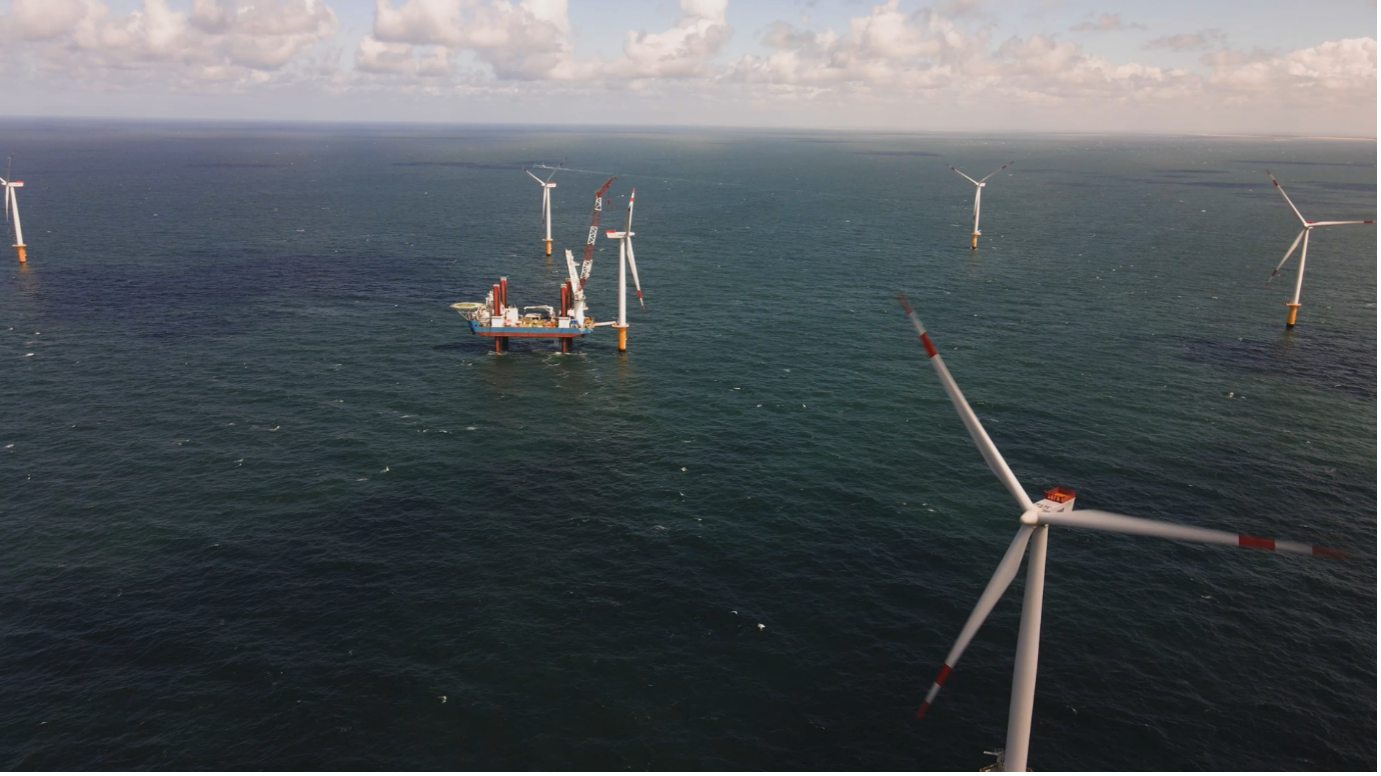Wind turbines operate in a difficult environment involving technical challenges and making any intervention difficult
By operating in harsh marine environments, offshore wind turbines are facing extreme mechanical stresses and are prone to erosion. The wind itself, although necessary for the turbine operation, can negatively impact the wind turbine, leading to shut down when the wind speed exceeds 25m/s[1].
Offshore windfarms are located by design far from the coast making them hardly accessible, or even inaccessible under bad weather conditions.
For these reasons, the technical issues can quickly become a tricky and costly task. Consider for example a generator, one of the most important equipment of the turbine, the losses due to a default are considerable: collateral damages can amount to 50k€ per turbine and the downtime energy loss amount to 10k€ per day.

Vessel availability: the bottleneck of replacement operations
To replace these bulky generators, a specific and huge vessel is needed, but its shipping time reaches on average 30 days, making it the main bottleneck in the replacement operations. Detecting the failure of the generator in advance can allow to anticipate the shipping time and limit, thus, the total downtime.
Trails have been done to anticipate this failure leveraging different technologies, but even advanced vibration monitoring solutions failed in this task due a lot of noise from overlaying frequencies from other components in the same spectrum. Thus, operators are mainly recurring to corrective maintenance to react as soon as possible if a failure occurs.
How predictive maintenance can help to reduce the offshore wind turbine downtime
In this context, Omexom Offshore a VINCI company specialized in project development as well as operation and maintenance of offshore facilities, decided to develop, in collaboration with the Leonard AI program, a new AI solution to detect in advance the generator failures. The already existing sensor data collected on the SCADA system were used for this purpose.
Periods where the turbines worked in normal conditions were used to model the normal behavior of each wind turbines. This model allows to reconstruct over time the behavior of the signals under normal conditions. The difference between the actual signal and the reconstructed normal conditions is then used to detect abnormal conditions and trigger an alarm when the difference is considerable. The triggered alarm is then submitted to the operational manager through a user-friendly interface for validation, following a Human-in-the-loop approach.
The quality of the results was so conclusive to led Omexom Offshore to change a generator in advance for the first time.
This project was conducted on Riffgat, one of Omexom Offshore’s windfarms. In the near future, Omexom Offshore has planned to replicate the model to other windfarms and to other critical components. This project was just the beginning for Omexom Offshore which has the ambition to become an AI expert in predictive maintenance for offshore windfarms.
This article is part of a series involving the participants of the AI program by Leonard, the VINCI Group’s foresight and innovation platform. The program has been specifically designed to accelerate the adoption of AI technologies within VINCI. It consists in a five-month incubation period where selected VINCI collaborators follow a learning by doing process where they codevelop an AI-based use case under the coaching and mentoring of Leonard’s team and consultants from Eleven Strategy.
More about Leonard’s AI program: https://leonard.vinci.com/en/programmes/ia-course/
[1] https://www.marketsandmarkets.com/Market-Reports/offshore-wind-market-253452593.html
[2] https://surfeo.eu/offshore-wind-energy-in-germany-market-overview-and-upcoming-projects/